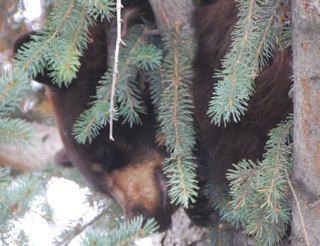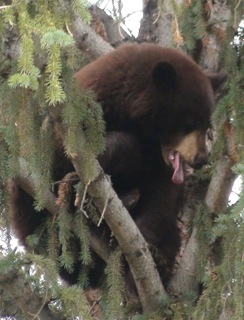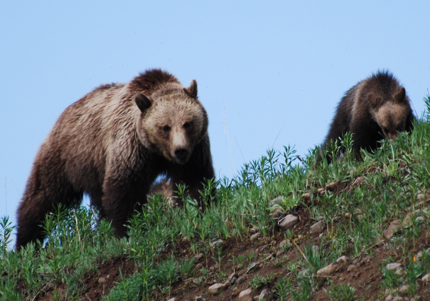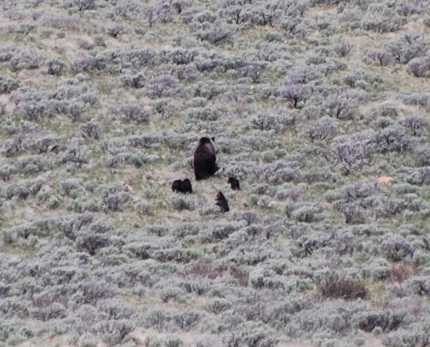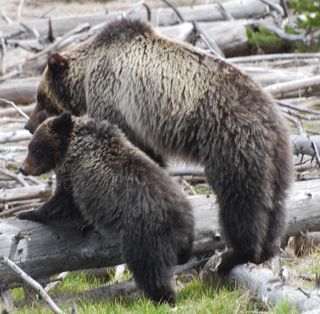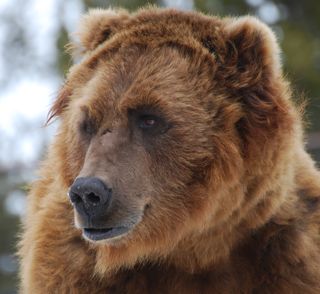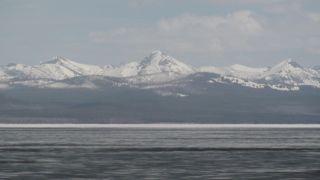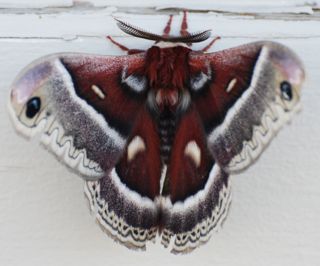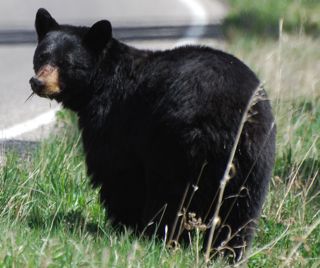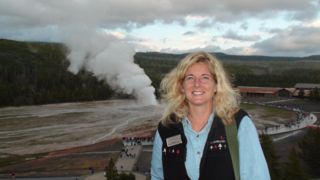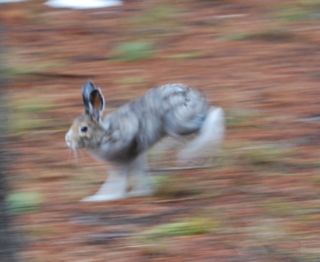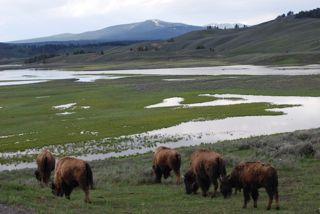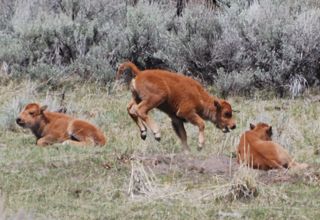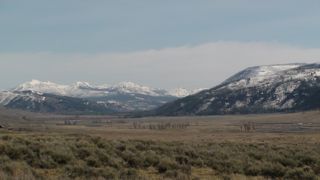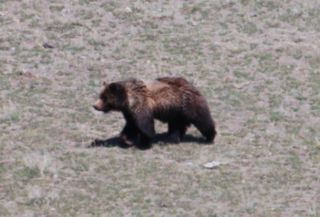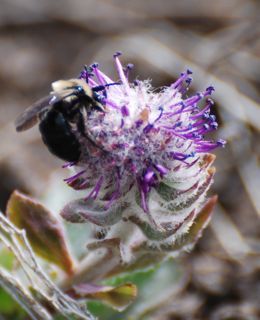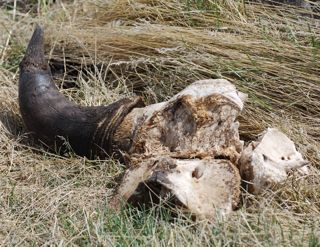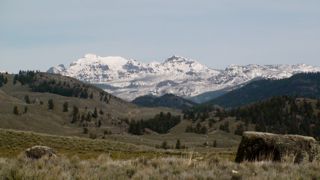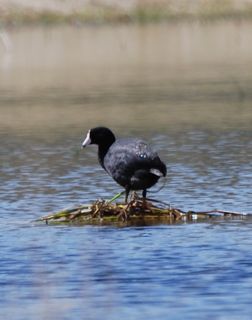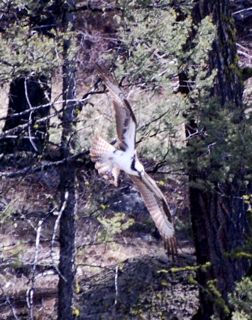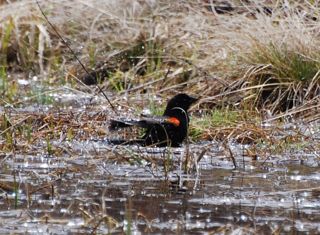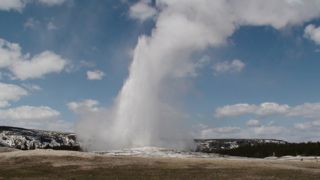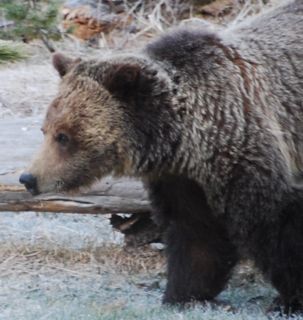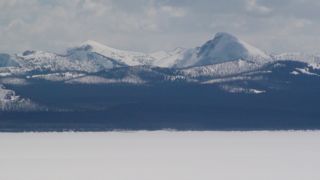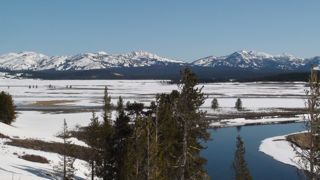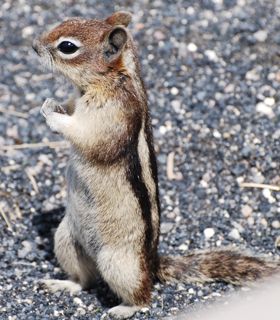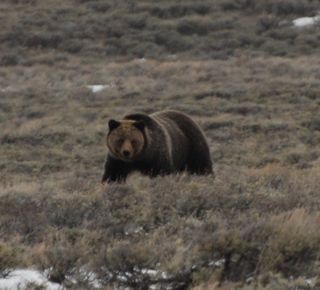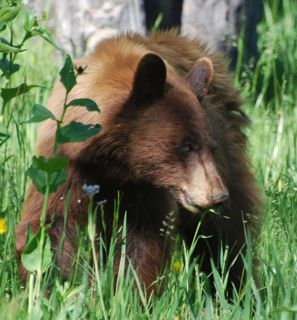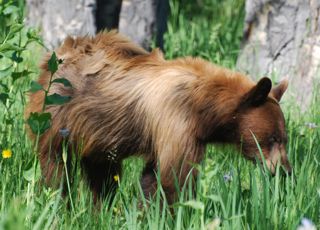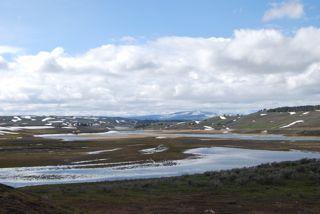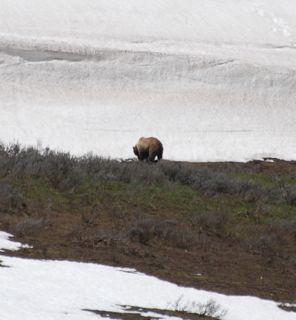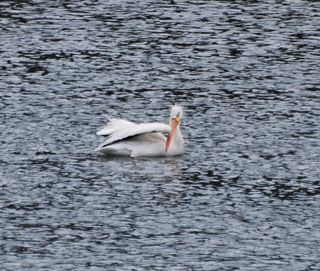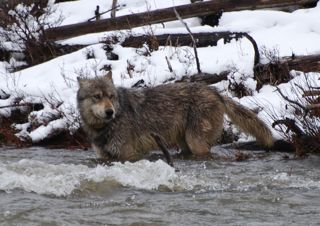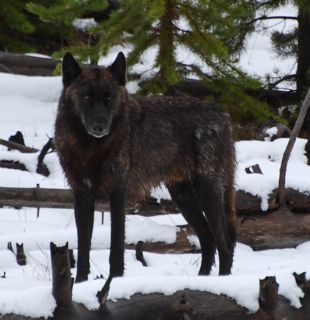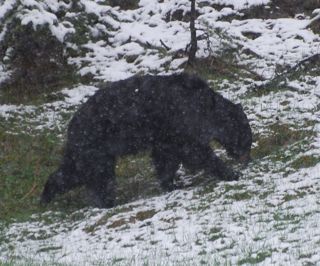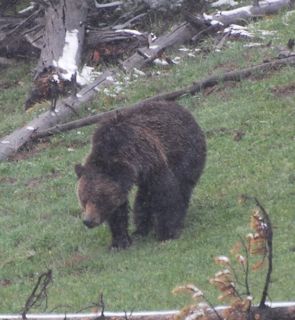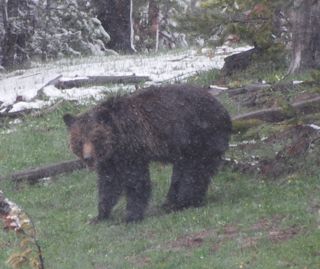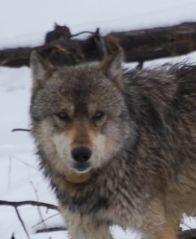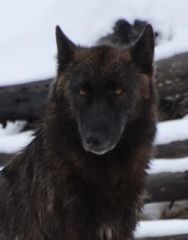 The hunting patterns of wolves may be impacted by climate change in Yellowstone Photo: Beth Pratt“If you want to get proud about a butterfly species in Yellowstone, this is the one,” said Diane Debinski, a Professor at Iowa State University. She was referring to the dainty Hayden’s Ringlet, a butterfly found almost exclusively in the Greater Yellowstone Ecosystem (GYE). Her research, however, did not bode well for the insect, as drier conditions in the region appear to be decreasing the butterfly’s habitat.
The hunting patterns of wolves may be impacted by climate change in Yellowstone Photo: Beth Pratt“If you want to get proud about a butterfly species in Yellowstone, this is the one,” said Diane Debinski, a Professor at Iowa State University. She was referring to the dainty Hayden’s Ringlet, a butterfly found almost exclusively in the Greater Yellowstone Ecosystem (GYE). Her research, however, did not bode well for the insect, as drier conditions in the region appear to be decreasing the butterfly’s habitat.
Debinski, along with hundreds of other scientists, researchers, and land managers, gathered inYellowstone National Park last week as part of the10th Biennial Scientific Conference. The goal of the conference, entitled “Questioning Yellowstone’s Future: Climate, Land Use, and Invasive Species,” was to foster synergies among current research and land management practices in order to find solutions for protecting the GYE against the three primary drivers of change.
And change is already rapidly occurring in the GYE, one of the largest intact temperate ecosystems on the planet. Peak runoff from snowmelt is happening 10-20 days earlier and the growing season in the GYE has increased by two weeks. Invasive species adds threats as well, such as the lake trout driving out Yellowstone’s native cutthroat trout or the Canada thistle marginalizing wetlands. Additionally, human population in the GYE has grown by 61% from 1970 to 2000 and at the same time rural land under development has increased by 350%.
All of these changes have significant implications for the diverse flora and fauna of the region. Dr. Stephen Gray, Wyoming State Climatologist, warned: “What we think of as drought today could become the norm in the future.” Along with Hayden’s butterfly, a warmer and drier climate has consequences for a number of animal species in the GYE. For example, Doug Smith, Yellowstone Wolf Project Leader, presented his research on winter wolf predation rates in Yellowstone and found that “big climatic patterns associated with snowfall are impacting the wolf kill rate.” The wolves in recent years have been switching from elk calves to bulls as a result of the bulls being in poorer condition in early winter because of drought.
Other climate related findings included a possible disruption of hibernation patterns for bears, and a shift in the GYE to warm water fisheries. “Bears don’t pee for five months,” observed Professor Hank Harlow of the University of Wyoming. His research showed that the bear’s physiological strategy to conserve protein in hibernation through recycling urea could be disrupted by the animal being aroused from its den in warmer winters. Scott Christensen, the Climate Change Program Director for the Greater Yellowstone Coalition (and an avid angler), said native trout faces risks from decreased river flow and warmer water temperatures. “Climate change is already impacting native trout and will continue to do so in the foreseeable future.”
Dr. Bob Gresswell, from the Northern Rocky Mountain Science Center, addressed the severe threat the invasive lake trout poses to Yellowstone’s native cutthroat, and recalled the days when hundreds of thousands of visitors would gather at Fishing Bridge every year to watch the Yellowstone cutthroat spawn. “If you’ve been to Fishing Bridge lately, you are lucky to see any trout,” he lamented. Dr. Andrew Hansen from Montana State Universityproposed the choice of either loving the GYE to death or loving it to health in his keynote address. His research has shown that land use development in ecologically significant areas is already impacting the GYE, and in response to a predicted doubling of the population by 2040, he posed the question, “What is the population here that would serve the common interest?”
Despite all these challenges, the group remained hopeful that science could provide solutions to assist with protection of the GYE. In his panel on the area’s science agenda, Tom Olliff, with the Great Northern Landscape Conservation Cooperative, announced, “The good news is a lot of the work on these issues has been going on over the past year,” referring to two prior workshops held on the topic. Continuing this work—and finding viable solutions to the issues facing the GYE—is a vital next step. Dr. Marcia McNutt, the Director of the USGS, provided attendees with the call to action: “Yellowstone like many of America’s great places is many things to many people but what it can never be is a failed scientific experiment.”
The 10th Biennial Scientific Conference, “Questioning Yellowstone’s Future: Climate Change, Land Use and Invasive Species,” was held in Yellowstone National Park on October 11-13, 2010.
Conference sponsors include the US Geological Survey, Biological Resources Discipline, Northern Rocky Mountain Science Center; US Fish and Wildlife Service, Mountain Prairie-Region, Office of Landscape Conservation; Montana State University;Yellowstone Association; University of Wyoming Ruckelshaus Institute; Rocky Mountains Cooperative Ecosystem Studies Unit; University of Wyoming-National Park Service Research Center;Greater Yellowstone Coordinating Committee(National Park Service, US Fish and Wildlife Service, US Forest Service); Canon U.S.A., Inc., the Yellowstone Park Foundation, and the Greater Yellowstone Science Learning Center.




